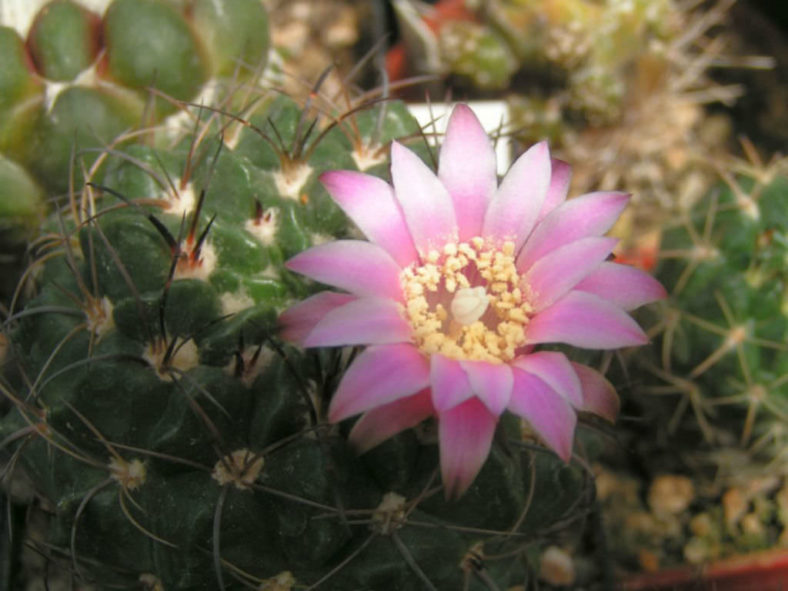Neowerdermannia is a small genus consisting of two species of spiny globose cacti that strongly resemble those in the Gymnocalycium. These cacti produce flowers near their apex, featuring naked floral tubes with white or pink scales. Their fruits are globose and dehiscent.
The stems have ribs that are not clearly defined and are divided into prominent tubercles. The areoles are small, located at the tops of the tubercles, and bear up to 20 stout spines that can be either curved or hooked.
Plants from this genus are native to Argentina, Bolivia, Chile, and Peru, although they are not found in large quantities. They are even more rare in cultivation, primarily grown by enthusiasts rather than commercially.
Growing Conditions
Light: These cacti thrive in bright, sunny conditions but can also tolerate light shade.
Water: During the summer months, when Neowerdermannias are actively growing, they require regular watering—typically once a week for smaller plants in small pots. However, allowing the soil to dry out before watering again is very important. Watering during the winter is unnecessary and should be avoided. Spring and fall can be challenging times for proper watering.
Temperature: Neowerdermannias are quite cold-resistant and can withstand temperatures as low as 14° C (-10° C) or less for short periods.
Soil: The potting medium should provide good drainage to prevent the plants from sitting in soggy soil for more than a day or two after watering.

Propagation
These cacti are typically propagated from seeds but can also be grown by cuttings or grafting. Seeds should be sown in the spring or summer. Once the seedlings are well-rooted, they should not be disturbed. After that, they can be carefully transplanted into small pots.
Pests and Problems
Neowerdermannias are particularly susceptible to root rot. Therefore, it is advisable to underpot them in a smaller container filled with a very porous soil mix.
Grower's Tips
Neowerdermannias originate from mountainous areas, which means they thrive in bright light and prefer cool, dry conditions during the winter. This cool period, with temperatures ranging between 32°F and 50°F (0°C and 10°C), is essential for promoting flowering and ensuring their overall health.
These plants have a thick taproot, making them challenging to cultivate, and they are prone to rot due to their sensitivity to excess moisture. Growing Neowerdermannias to a large size on their own roots is quite difficult, and creating a sizable clump can be a significant challenge.
To support their tap roots, Neowerdermannias require deep pots with excellent drainage. While they are often grafted to make cultivation easier and to prevent root problems, it is important to note that the grafted bodies can split if overwatered, especially in spring.
Links
- Back to genus Neowerdermannia
- Succupedia: Browse succulents by Scientific Name, Common Name, Genus, Family, USDA Hardiness Zone, Origin, or cacti by Genus